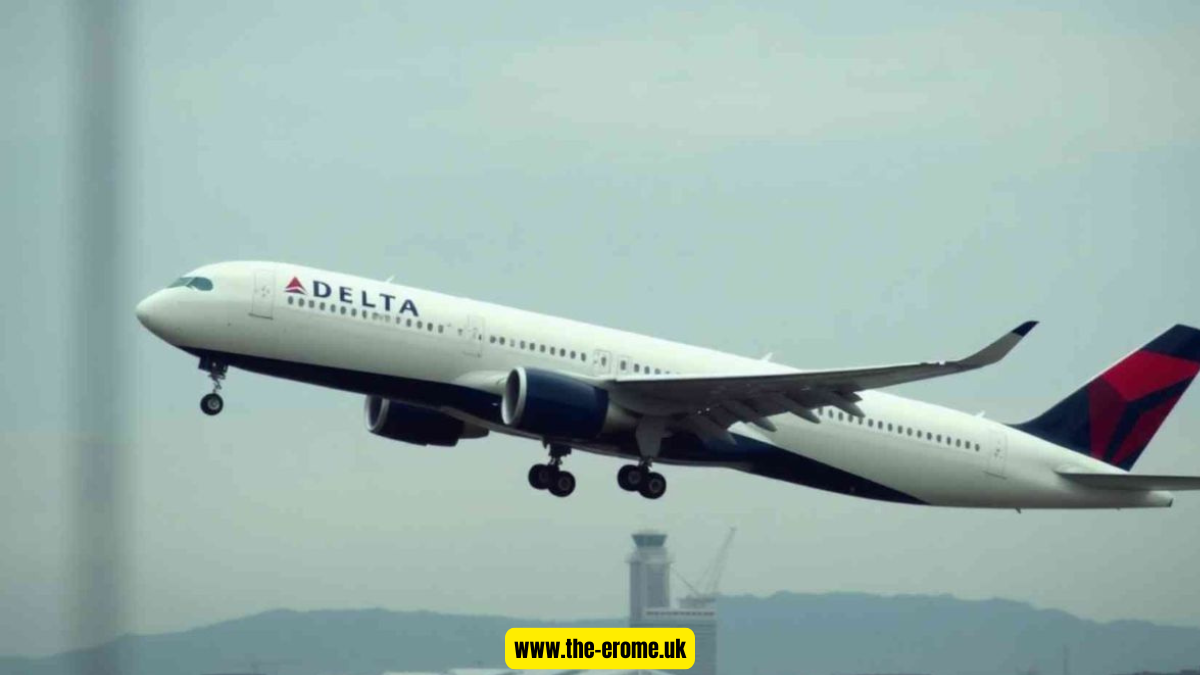Delta Flight DL275 diverted LAX after an unexpected midair issue forced the aircraft to make an emergency landing. The flight, which was scheduled to travel from Detroit Metropolitan Wayne County Airport to Tokyo Haneda, encountered a technical problem that prompted the crew to reroute to Los Angeles International Airport for safety reasons. This incident attracted widespread attention from aviation enthusiasts, passengers, and news outlets across the United States and Japan.
The decision for Delta Flight DL275 to divert LAX was precautionary, ensuring the safety of all passengers and crew members on board. Delta Air Lines, known for its strong safety record and operational excellence, handled the situation professionally and swiftly. As details emerged, it became clear that the diversion was due to an engine-related issue that required immediate technical assessment upon landing.
Background of Delta Flight DL275 and the Detroit–Tokyo Route
The Detroit-to-Tokyo Haneda route is one of Delta’s most significant transpacific operations. Operated by an Airbus A350-900, Delta Flight DL275 connects two major business hubs, serving both corporate and leisure travelers. The Airbus A350 is equipped with Rolls-Royce Trent XWB engines designed for long-haul efficiency and reliability, making this aircraft a cornerstone of Delta’s international fleet.
For Delta Flight DL275 to divert LAX, the event had to involve a technical or safety concern serious enough to justify a change in course. Los Angeles International Airport serves as an ideal diversion site for transpacific flights due to its advanced maintenance facilities and accessibility. Choosing LAX ensured Delta technicians could inspect the aircraft quickly and address any mechanical issues with minimal disruption.
Timeline of Events: How the Diversion Unfolded
Delta Flight DL275 departed Detroit on schedule, heading toward Tokyo Haneda on what was expected to be a smooth 13-hour flight. However, several hours into the journey, while flying over the Pacific, the crew identified a potential malfunction related to the aircraft’s engine systems. Following safety protocol, the pilots decided to divert to Los Angeles rather than continue toward Japan, where maintenance support would be more limited.
As Delta Flight DL275 diverted LAX, air traffic controllers coordinated a safe landing route. The aircraft descended gradually, maintaining full control throughout the process. Passengers were informed of the situation and reassured that the diversion was a precautionary measure. Upon landing, Delta ground teams and emergency personnel were ready to inspect the aircraft, ensuring all passengers disembarked safely without incident.
Cause of the Diversion: Engine Issue and Safety Systems
The cause of Delta Flight DL275’s diversion was traced to a problem within the Rolls-Royce Trent XWB engine’s anti-ice system. This system is crucial for maintaining engine performance at high altitudes, preventing ice buildup that can affect air intake and efficiency. When the system indicated a possible malfunction, Delta’s flight crew took immediate action to prioritize safety and reroute to LAX.
Delta Air Lines’ proactive approach in diverting the flight reflects the company’s adherence to the highest aviation safety standards. The airline’s maintenance teams inspected the engine upon arrival and confirmed that the issue was managed effectively during the flight. The prompt response demonstrated Delta’s commitment to passenger safety, minimizing risks associated with extended long-haul flights over the ocean.
Passenger and Crew Experience During the Diversion
For passengers aboard Delta Flight DL275 diverted LAX, the experience was handled with professionalism and calm. According to reports, the cabin crew kept everyone informed throughout the event, explaining that the diversion was a precaution and not an emergency landing due to immediate danger. Passengers praised the flight attendants for maintaining a reassuring atmosphere on board.
Once the aircraft landed safely in Los Angeles, Delta provided accommodations and meal vouchers for all affected passengers. Many were rebooked on alternate flights to Tokyo within hours. The smooth handling of logistics reflected Delta’s reputation for customer service and crisis management. For most travelers, the diversion served as a reminder of the airline’s commitment to putting safety above all else.
Official Delta Air Lines Statement and Response
Following the incident, Delta Air Lines released an official statement confirming that Delta Flight DL275 diverted LAX due to a mechanical issue involving the engine’s anti-ice system. The company emphasized that safety is its highest priority and that the diversion was precautionary. Delta also confirmed that there were no injuries and that passengers were accommodated appropriately.
The airline’s maintenance division conducted a detailed inspection of the Airbus A350, verifying that all systems were secure before returning the aircraft to service. Delta’s transparent communication and swift response earned praise from both passengers and aviation experts. The incident reaffirmed the airline’s reputation for reliability and strict adherence to FAA safety regulations.
Broader Aviation Safety Context
In modern aviation, diversions such as the one involving Delta Flight DL275 diverted LAX are relatively rare but demonstrate how effective modern safety systems are. Aircraft like the Airbus A350 are equipped with advanced monitoring tools that detect even minor technical irregularities long before they escalate into major problems. By diverting to LAX, Delta followed global best practices for safety management.
The incident also highlights the robustness of Delta’s operational network. With access to skilled engineers and extensive support facilities at Los Angeles International Airport, the airline was able to address the issue quickly. Such diversions are a testament to the reliability of modern aircraft design, where safety always outweighs schedule convenience.
Conclusion
The incident involving Delta Flight DL275 diverted LAX underscores the precision and preparedness of modern aviation safety systems. While the cause was traced to a manageable engine anti-ice issue, Delta’s swift action ensured that every passenger arrived safely. The event showcased the airline’s professionalism and dedication to its “safety first” philosophy.
Passengers may have faced a temporary delay, but the outcome reaffirmed trust in Delta Air Lines and the aviation industry’s high safety standards. Delta Flight DL275’s diversion stands as a reminder that even when unexpected events occur, proper training, quick decisions, and strong communication can make all the difference.
FAQs About Delta Flight DL275 Diverted LAX
What happened to Delta Flight DL275?
Delta Flight DL275 diverted to Los Angeles due to an engine anti-ice system issue during its journey from Detroit to Tokyo.
Was it an emergency landing?
The diversion was precautionary rather than an emergency. The aircraft landed safely at LAX with no injuries reported.
Why was LAX chosen for the diversion?
LAX offers world-class maintenance facilities for Delta’s Airbus A350 fleet, making it the safest and most logical diversion point.
What aircraft was used for Flight DL275?
The flight operated on an Airbus A350-900 powered by Rolls-Royce Trent XWB engines.
Were passengers delayed?
Yes, but Delta rebooked travelers promptly and provided accommodations until the next available flight to Tokyo Haneda.




